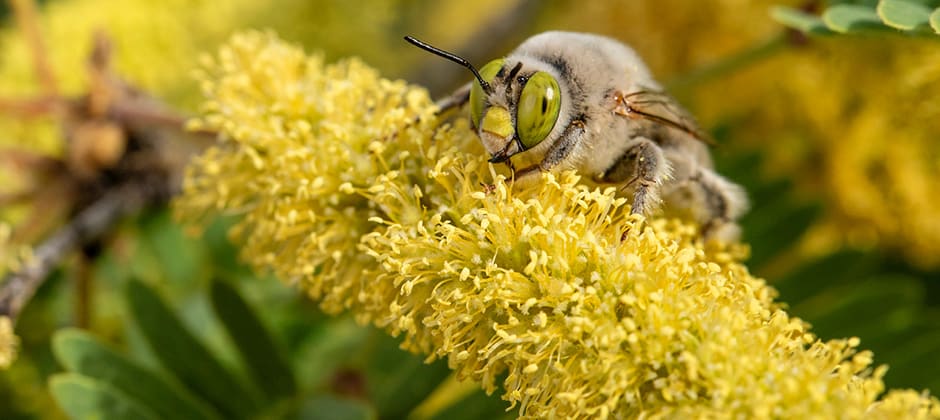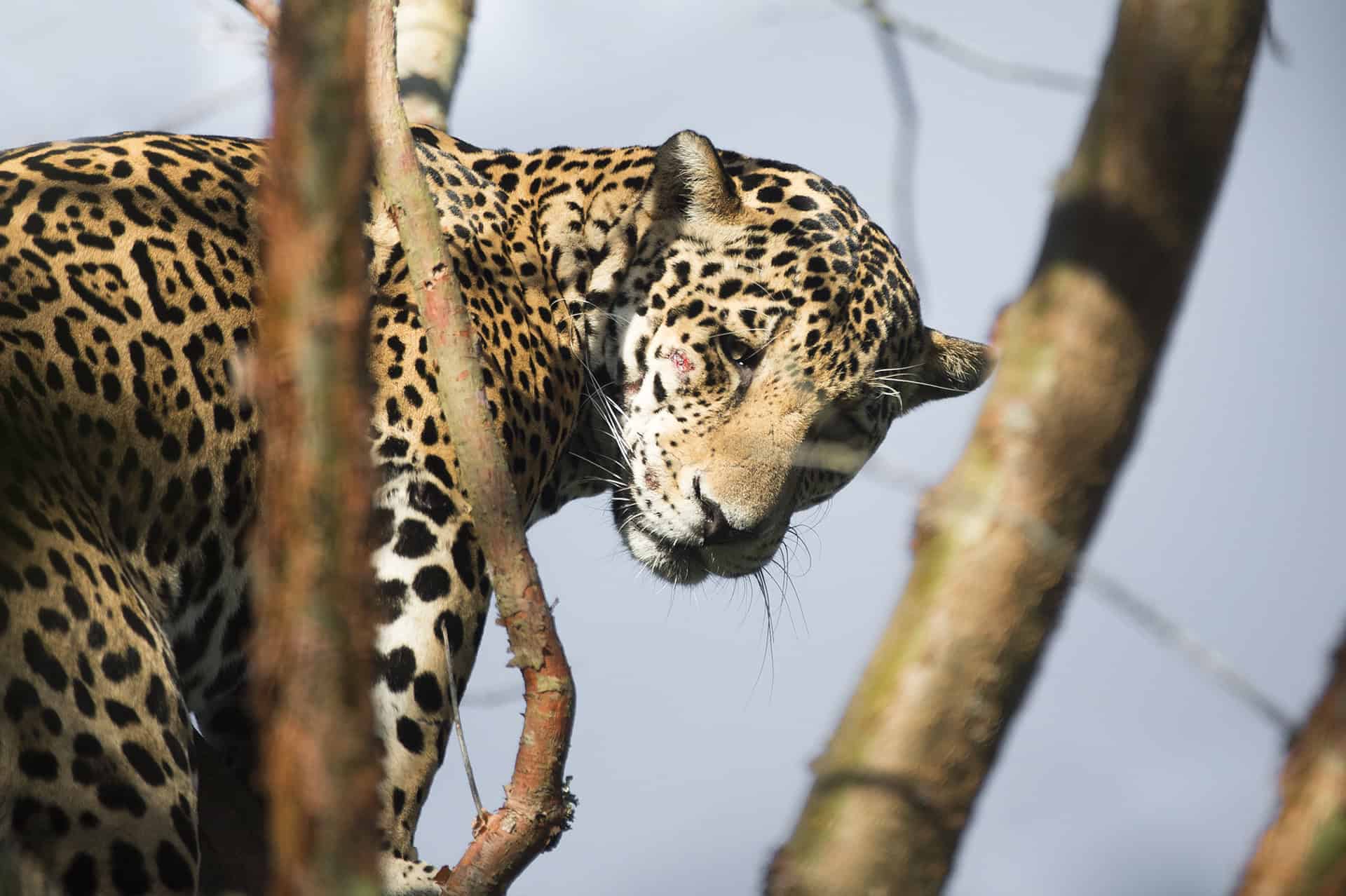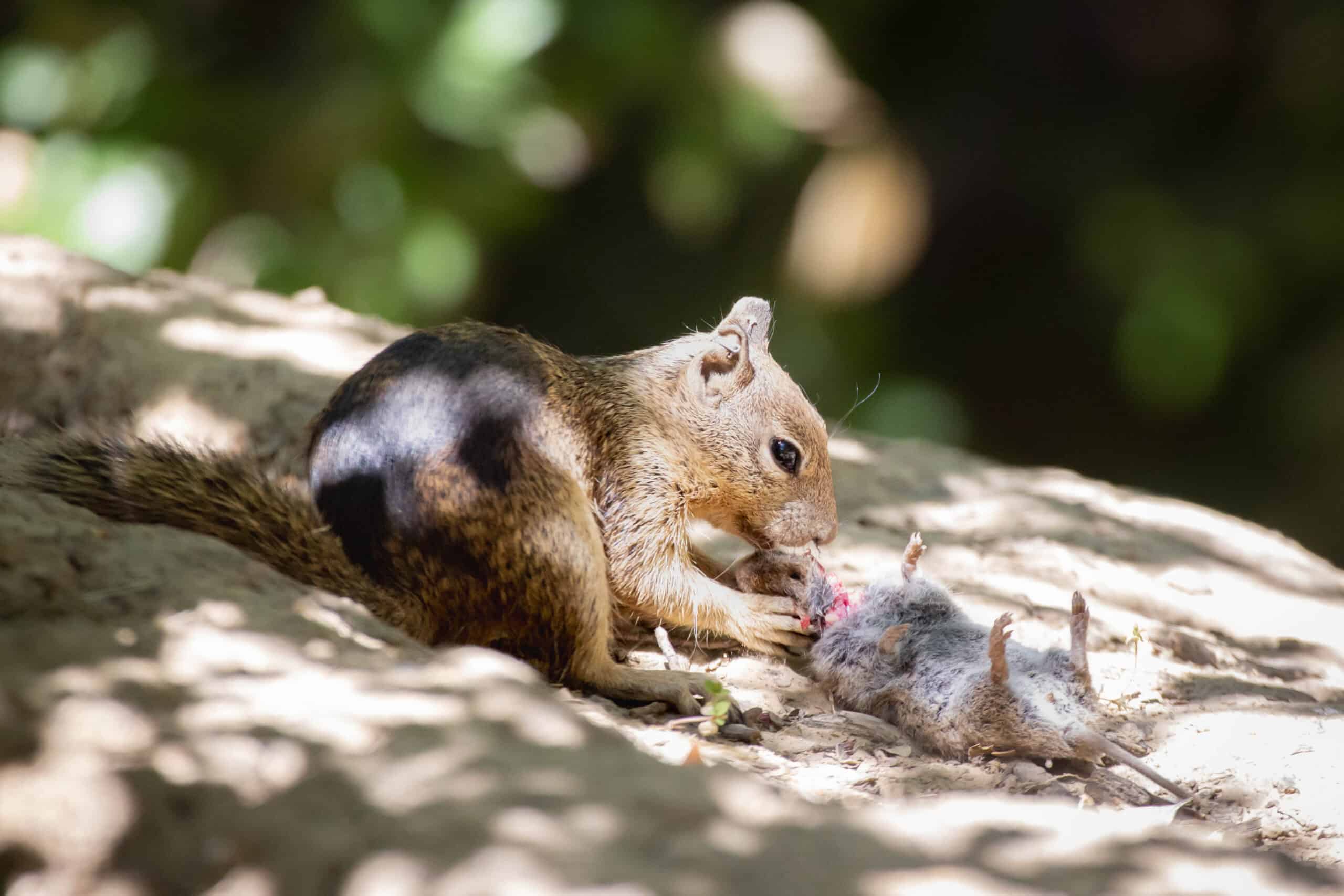Share this article
U.S.-Mexico border a native bee hot spot
About 500 bee species —14% of all of the bee species known in the United States — can be found in the Chihuahuan Desert at the border of the U.S. and Mexico.
“That’s an amazing percentage of all of the diversity in the United States,” said Robert Minckley, a professor of instruction at the University of Rochester.
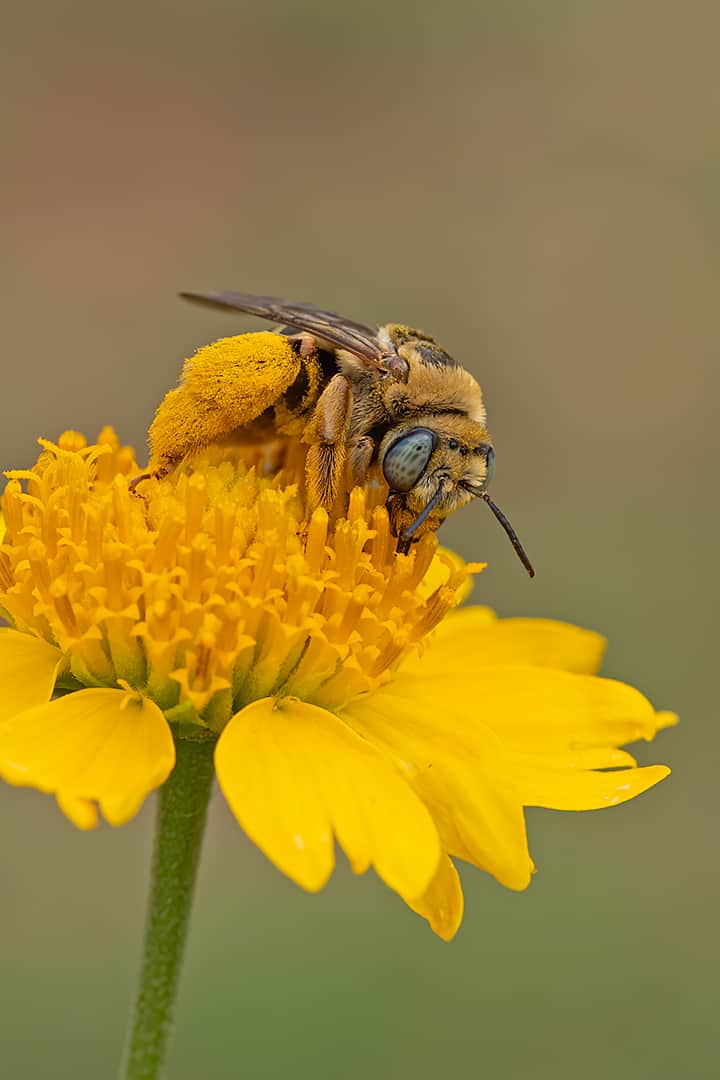
A female Centris caesalpiniae, sits on a Krameria flower. Credit: Bruce D. Taubert
Minckley and others already knew this part of the world hosted an unusually high diversity of bees. As part of a study published in the Journal of Hymenoptera Research, he and co-author William Radke set out to look at a protected area in the desert to see exactly how diverse it was. The study area was flanked by a ranch without cattle on one side and a wildlife refuge on the other.
“I was interested in documenting a place that wasn’t badly overgrazed in this part of the world [to see] if diversity was high for bees,” Minckley said.
The work lent the team an opportunity to work with students on both sides of the border, including students from Mexico and Guatemala, who gathered data over the course of eight years. The study lasted so long because of the nature of desert bees. The bees are solitary and appear only once a year for three weeks or a month either in the spring, after winter rains bring early flowers, or in the late summer after monsoon rains. The rest of the year they remain underground. Completely different bees come out in the different seasons. Sometimes, they skip years and don’t emerge until conditions are just right. Even when they are above ground, the tiny, solitary bees are hard to spot.
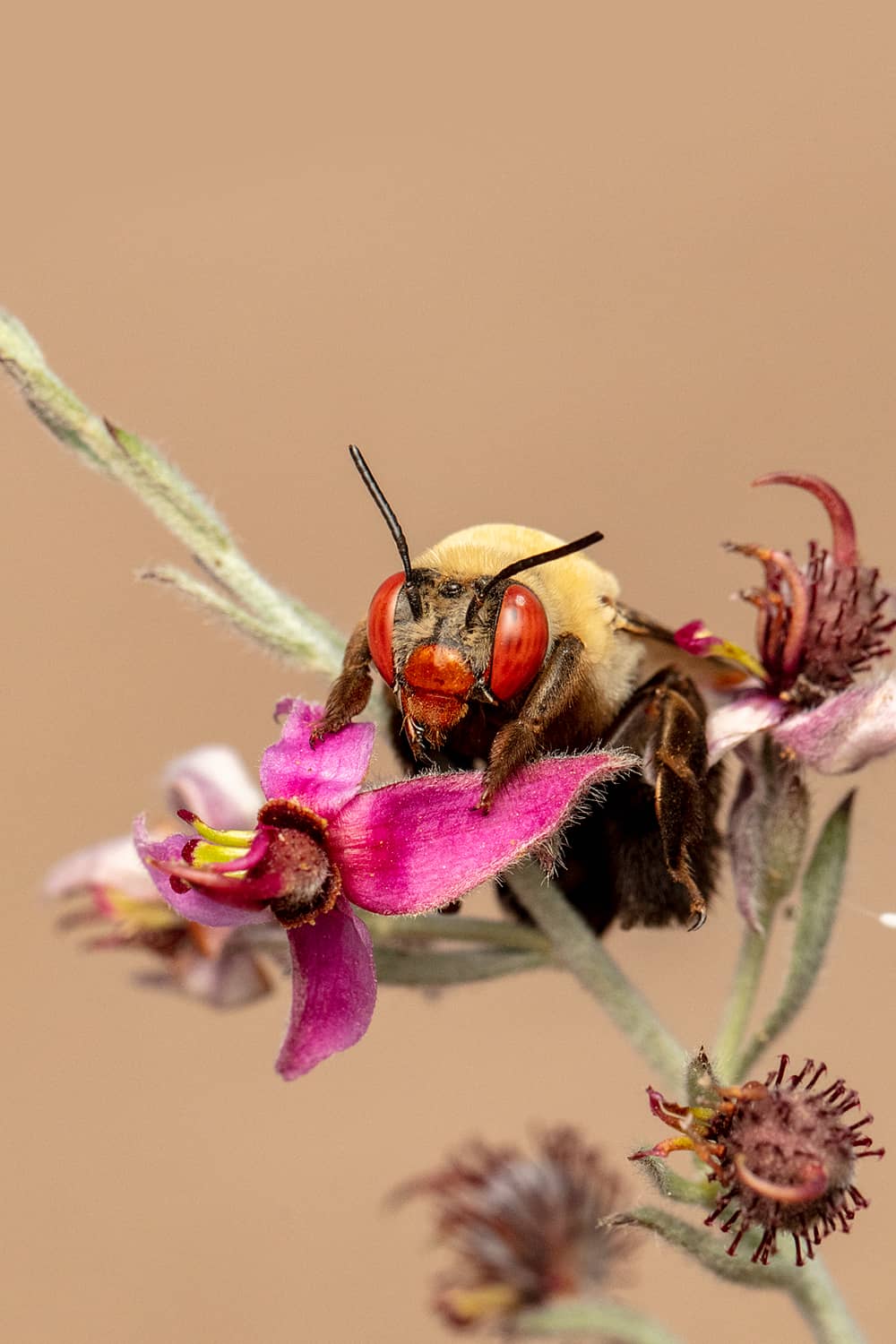
A female Centris caesalpiniae, sits on a Krameria flower. Credit: Bruce D. Taubert
The team detected 470 bee species in 10 square miles—about a seventh of all bee fauna in the U.S. — including some that are incredibly rare and many that pollinate endangered plant species. Because not much is known about individual bee species, however, none are listed under the Endangered Species Act, Minckley said. He attributes the rich diversity to the uniqueness of the region — a biogeographical crossroads where the Rockies, Sierra Madres, subtropics and desert come together — that about 30% of the bees are specialists of one or a few plants and the completely different bee fauna in spring and summer.
“It’s this intersection of ecoregions and this mix [of species well-adapted to deserts] there that’s probably important,” he said.
The findings provide baseline information about what bee diversity looks like in the region. “Especially for insect groups, we rarely have a good estimate at the place where diversity is highest,” he said. “There are so many of them, and it’s difficult to collect them all.”
Header Image:
A male Centris caesalpiniae, a desert bee active in the spring, sits on an acacia flower.
Credit: Bruce D. Taubert



